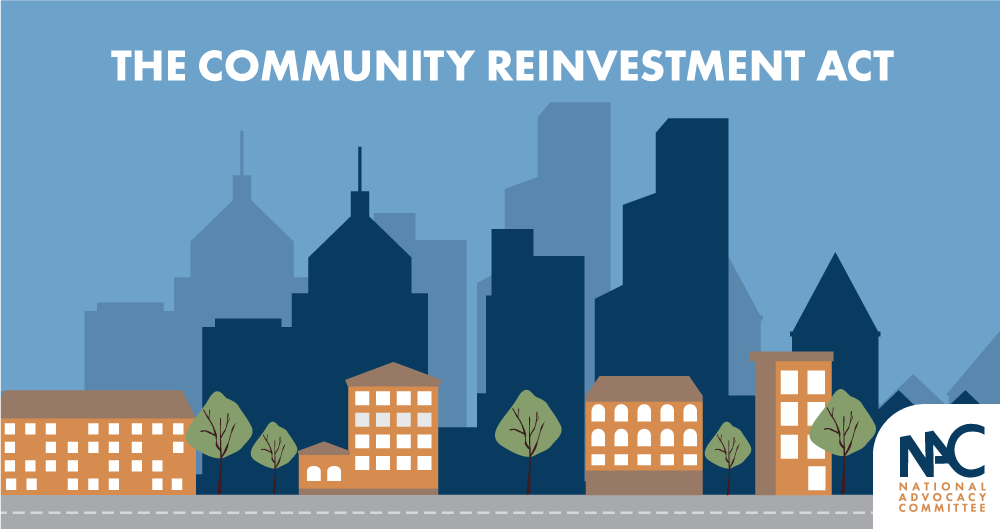The latest on CRA
Celebrating NAHREP familia, cultura, politics, and grassroots action
February 11, 2021
Qué onda mi gente?!
A few weeks ago, the National Advocacy Committee Regionals met for a virtual retreat to plan out the year and dream big goals for what we can accomplish as we grow our advocacy operation. As we prepare for a year of big legislative fights, such as increasing housing inventory and passing immigration reform, we need to be prepared and ready to wield the power of our people when it counts.
One of the primary ways in which we do that is through growing our National Advocacy Committee, individuals that have raised their hand to join our advocacy efforts. If you are receiving this blog post via email, you’ve likely already joined the NAC. You know the drill, you’re a rock star! If you’re reading this through social media, we invite you to join today.
By joining the NAC, you’ll be signed up to receive these blog updates and to get our calls-to-action to contact your elected officials. Each call-to-action can be done with a click of a button. We’ll describe an issue and provide a phone or email script and then you decide if you want to take action. It super easy guys!

What’s happening with the Community Reinvestment Act?
Last year, the Office of the Comptroller (OCC) and the Federal Deposit Insurance Corp (FDIC) released a proposed rule to modernize CRA. NAHREP found the proposed rule to be problematic, you can read about our concerns in the blog post here. A few months later, we featured our friend Josh Silver, Senior Advisor for the National Community Reinvestment Coalition, to give an update on the rule. There has been some progress on this saga since we last talked about CRA so we thought it might be a good idea to update you on what’s been happening.
Before first, here’s a quick refresher on CRA:
What is CRA again?
The Community Reinvestment Act was passed in 1977 in order to end housing discrimination known as redlining. The bill required banks to meet the credit needs of the communities in which they do business. Discrimination in lending is still a problem, yet moves have been made to substantially weaken the law.
From time to time, federal regulatory agencies examine banks on their lending, services, and investments in low- to moderate-income communities and rate them. These ratings are consequential to a bank’s ability to operate.
Why is CRA important to helping low- to moderate-income communities?
- CRA has led to more than $4 trillion in bank lending, investments, and philanthropy in underserved communities since 1996.
- Recently, researchers at the Philadelphia Federal Reserve Bank found that when census tracts lose CRA eligibility, it leads to about a 10% or greater decrease in purchase mortgage lending by CRA-regulated lenders. Nonbanks and independent banks don’t have to comply with CRA rules and help offset about half, but not all, of the decrease in purchase originations by CRA lenders.
So what are we upset about? What changes are being proposed?
You can read more about our concerns with the OCC rule here. But in summary, the OCC has now implemented a single metric to determine if a bank received a CRA passing grade. Meaning, banks would simply need to invest a flat percentage of their money in low-income neighborhoods without specifying the kinds of investments. This will likely incentivize banks to do larger and easier projects, such as bridges or stadiums, instead of smaller, more complex activities, such as extending mortgages to working-class people in those communities. We would likely see a direct lowering of the amount of loans banks would do to LMI borrowers. This runs right through the heart of our mission.
Timeline of what has happened:
- End of 2019: The Office of the Comptroller of the Currency (OCC) and the Federal Deposit Insurance Corp (FDIC) drops problematic proposed rule we’ve been talking about.
- April 8, 2020: NAHREP writes a letter to the OCC expressing our concerns with this new rule. You can read the letter here.
- May 2020: OCC implements their proposed changes to CRA.
- June 2020: U.S. House of Representatives passes a resolution invoking the Congressional Review Act authority to attempt to revoke the OCC changes to CRA. The White House shortly issues statement that the resolution would be vetoed by the President.
- June 2020: The National Community Reinvestment Coalition, the California Reinvestment Coalition and Democracy Forward sue the OCC with a claim that the agency’s CRA reform rule would “gut” banks’ obligations to invest in their communities. They also argue that the rulemaking process violated the Administrative Procedures Act.
- September 2020: The Federal Reserve, which has not signed on to the OCC’s CRA rule because they thought it was too problematic, announces its own CRA rulemaking effort! Unlike the OCC, the Fed has focused on transparent data analysis and qualitative measures of impact on communities rather than on simplistic formulas that are easy to manipulate.
- January 2021: A U.S. District Court judge indicated that the case issued by NCRC, CRC and Democracy Forward has merit, noting concerns about the transparency of the OCC’s process to yield this rulemaking.
- February 16, 2021: And then all of this brings us to now. Comments are due to the Federal Reserve Board on their Advance Notice of Proposed Rulemaking on the Community Reinvestment Act to comment on THEIR proposed rule.
NAHREP letter to the Federal Reserve
Overall, the Federal Reserve’s proposed rule is a major improvement to the OCC rule. We still need to ensure that the OCC rule is revoked, but in the meantime, let’s address the Fed’s letter. Next week, NAHREP will be releasing a letter to the Fed outlining the below.
If any of you work in the CRA department of your bank, or know anyone who does, please read carefully and let me know if there’s anything else you’d like for us to include in the letter. Submit your comments here.
Some key points we will be making to the Federal Reserve Board on CRA:
- Focus on low levels of lending: The Fed asks whether underserved areas should be defined as those with high levels of poverty or low levels of retail lending. We plan on advocating that they define underserved as those with low levels of lending which would effectively target redlined neighborhoods and communities of color.
- Include race/ethnicity on CRA exams: CRA exams could include performance measures assessing lending, investing, branching, and services to people of color and communities of color. The Fed could also provide CRA consideration for lending and investing in majority-minority census tracts outside of assessment areas.
- Improve data collection: In the interest of reaching underserved areas, we strongly support the Fed’s proposals to improve data collection including community development financing data, which would better enable stakeholders to determine communities most in need.
Are you a lender within the CRA division of your branch? If so, what do you think? Are you a real estate agent where many of your customers receive mortgages because of CRA lending, share your story! Let’s not take the programs that help our customers for granted. We need to speak up. If you have any good CRA stories please submit here.

About Noerena Limón
Noerena Limón is NAHREP’s Executive Vice President of Public Policy and Industry Relations. Noerena heads the organization’s policy and advocacy efforts on issues ranging from homeownership, housing inventory, credit access and immigration.
Prior to joining NAHREP, Noerena spent six years at the Consumer Financial Protection Bureau (CFPB) and served as a political appointee under President Obama in the White House Office of Political Affairs.





